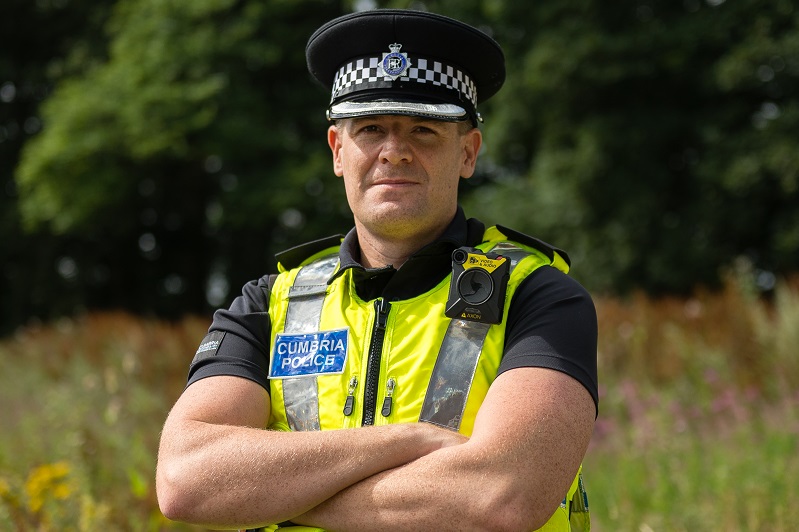Quick links
- Introduction
- Real voices
- About Cumbria Constabulary
- What you’ll find in this report
- Working effectively
- Body-worn video cameras: Breaking barriers
- Need to give evidence to the police? There’s an app for that
- High quality video and imagery is valuable in interviews – and in the courtroom
- An efficient force
- Managing a ‘deluge of evidence’
- Saving time on travel and administration
- A legitimate force
- The impact of body-worn video on perceptions: Transparency, accountability, and complaints
- How police technology affects victim and witness satisfaction levels
- Legitimacy and its connection to psychological safety
- Conclusion
Introduction
Policing technology serves to keep the public safe, but its role and impact is subject to scrutiny and debate.
Scrutiny, debate – and from all quarters. The citizens who want to know that policing budgets are used appropriately, and that local forces are effective; the governmental bodies managing resources; the serving police officers who want to be empowered to work to the best of their abilities.
Recent policy-making around public safety technology includes the 2020-2030 National Policing Digital Strategy, produced by the Police Digital Service and the National Police Technology Council (NPTC). Strategic priorities include a seamless citizen experience; addressing harm through harnessing digital technologies; enabling officers and staff through digital; embedding a whole system approach, and empowering the private sector.
Important ambitions, yes, but we saw a lack of detailed information on how police forces actually use technology to drive improvements. Recent studies of the use and impact of, for example, body-worn video (BWV) cameras, have produced inconclusive results, or the reporting is strictly quantitative – all about statistics and numbers, and less about the human experience of officers and the public. So we at Axon supported an independent study by Crest Advisory, a leading consultancy in the UK policing, justice and public safety sectors, to assess the impact of enabling technologies on Cumbria’s constabulary.
Real voices
Crest Advisory worked with eight focus groups of 40 Cumbria frontline officers and staff. In addition, they conducted one-to-one interviews with 10 officers and staff across more than six months in the first half of 2021. The study was supplemented by feedback from a small independent advisory group made up of volunteers and members of the public. The study also included a literature review, and analyses of police performance data and police incident data.
Cumbria Constabulary have used the technology in focus since 2018, so the force have seen its impact in a wide variety of situations over an extended period of time. Over 90% of the officers we surveyed had at least two years’ experience in their current policing role, and over half had more than six years’ experience.
About Cumbria Constabulary
Cumbria police officers cover one of the largest geographical areas of any UK force, working across 2,600 square miles and a dispersed, predominantly rural population. His Majesty’s Inspectorate of Constabulary and Fire & Rescue Services (HMICFRS), the independent public body, notes ‘areas of significant deprivation’ in the region.
HMICFRS also reports on volume of police work: in 2021, 221,000 calls and 42,500 digital contacts were received by Cumbria police, with 64,000 of these being emergency calls, an increase of 9.4% from the previous year. These resulted over 95,900 incidents and 35,000 crimes being recorded. HMICFRS rated Cumbria Constabulary as either Good or Adequate in most areas of policing, and Outstanding at managing offenders[1].

What you’ll find in this report
We’re taking a nuanced look at the role of technology in modern police work, with fresh perspectives about its impact on the day-to-day. In this paper, we share compelling insights into the frontline experience with:
- Body-worn video
- Cloud evidence sharing and management, including remote evidence collection
- Interview room software
We assess the impact of this technology on the Cumbria police force and its:
- Effectiveness
- Efficiency
- Legitimacy
These three strands – police effectiveness, efficiency, and legitimacy (PEEL) – have their origins in the HMICFRS PEEL nationwide assessments.
We will explore:
- An effective force
– Body-worn video cameras: Breaking barriers?
– Need to give evidence to the police? There’s an app for that
– High quality video and imagery is valuable in interviews – and in the courtroom - An efficient force
– Managing a ‘deluge of evidence’
– Saving time on travel and administration - A legitimate force
– The impact of body-worn video on perceptions: Transparency, accountability, and complaints
– How police technology affects victim and witness satisfaction levels
– Legitimacy and its connection to psychological safety
Working effectively
What are we thinking about when we talk about the first strand in this study, police force effectiveness? Effectiveness is comprehensive of how a force carries out its responsibilities – including cutting crime, protecting the vulnerable, tackling antisocial behaviour (ASB), and handling emergencies and other calls for service. The more effectively police can work on resolving and investigating these incidents, the safer the overall law enforcement system; and the study found that technology plays a large role in enabling the accomplishment of these tasks.
Body-worn video cameras: Breaking barriers
The first area of heightened effectiveness due to technology that Crest studied was BWV. Earlier studies have been inconclusive as to the impact of body-worn cameras. Generally, there has not been a clear connection to better outcomes in the empirical data. With exceptions – a 2014 study[2] in Essex, for example, shows that domestic violence incidents were more likely to result in a charge when BWV footage was associated.
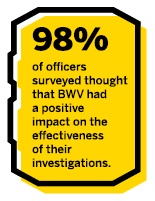 Those were quantitative studies; stepping away from the numbers and to the officers’ experience and confidence on the job, conclusions were straightforward. While BWV did not demonstrably make an impact on the likelihood of a charge, in our study, 98% of officers surveyed thought that BWV had a positive impact on the effectiveness of their investigations.
Those were quantitative studies; stepping away from the numbers and to the officers’ experience and confidence on the job, conclusions were straightforward. While BWV did not demonstrably make an impact on the likelihood of a charge, in our study, 98% of officers surveyed thought that BWV had a positive impact on the effectiveness of their investigations.
Decision-making for supervisors was easier, including the filtering of cases which shouldn’t be charged. Stills from video footage could be circulated to colleagues for the fast identification of suspects. We also heard that body-worn footage enabled more evidence-led prosecutions.
“If a victim doesn’t want to give a statement or support a case, officers can nevertheless use the BWV footage to support the prosecution.”
The focus group participants felt that BWV evidence resulted in better outcomes by encouraging early guilty pleas, and increasing the likelihood of conviction at court.
It certainly affects outcomes of cases that go to court, especially assaults against police officers. I haven’t got to rely on the CCTV street camera. It’s all there [the evidence] and the court can see it.
Study participant
Officers activated BWV in over 81% of incidents attended. It was used most often to:
- Capture the demeanour of suspects
- At violent or domestic incidents
- With potential complaints
- Recording taking a statement
- First attendance at an incident to gain an account
- Documenting decisions
- Recording from CCTV systems when staff were unable to download footage
Officers generally preferred not to activate BWV with emotional incidents, during periods of heavy rain, sexual offences or home visits. One officer noted, ‘The beeping reminds people that the BWV is recording every couple of minutes,’ and admitted this had, on occasion, ‘antagonised’ members of the public with mental health concerns.
However, in broad strokes, when we asked our Cumbria cohort about the effects of BWV, 93% thought it had a positive impact on stress levels in their roles, and 86% of officers called BWV ‘very important’ when responding to incidents.
Need to give evidence to the police? There’s an app for that
The collection of digital evidence goes beyond the BWV cameras on officers, however. The reality of today is that nearly every member of the public also carries a digital evidence collection device on a daily basis — their smartphone. Photos and videos captured on smartphones can be vital to depicting what has occurred in an incident, especially before an officer has arrived on the scene.
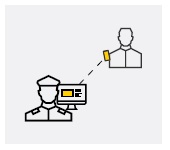 When the pandemic hit, digital methods of connecting with others became essential. At the time of this study in 2021, COVID-19 was still a major consideration in daily life. Even as the virus has ebbed away in many communities, we continue to use QR codes and contactless delivery, and why should it be any different when it comes to sharing evidence with the police? Officers continue to need flexibility in how and where they connect with the community.
When the pandemic hit, digital methods of connecting with others became essential. At the time of this study in 2021, COVID-19 was still a major consideration in daily life. Even as the virus has ebbed away in many communities, we continue to use QR codes and contactless delivery, and why should it be any different when it comes to sharing evidence with the police? Officers continue to need flexibility in how and where they connect with the community.
Some members of the public also appreciate having a level of distance when it comes to sharing evidence. When an incident has been particularly sensitive or traumatic in nature, giving up one’s smartphone for a time or speaking face-to-face with an officer can be an unnecessary burden on someone’s mental state or level of comfort.
Even before the pandemic, Cumbria saw the importance of enabling citizen submissions. Cumbria was the first UK police force to deploy Axon Citizen, our public evidence submission tool, agencywide. Officers reported that Axon Citizen enabled members of the public to share evidence when they were needing to maintain social distance or were concerned about being seen visibly engaging with the police.
Axon Citizen has proved effective, especially throughout the pandemic, providing investigators with additional evidence only possible with the availability of a remote evidence collection link. Our survey respondents confirmed that it improved the effectiveness of investigations.
“We don’t have to turn up at their front door in uniform. This gives people more confidence to provide evidence because there isn’t the risk that their neighbours will see the police presence and then identify them as being involved in an investigation.”
Officers can allow victims and witnesses to keep their mobile phones.
Prior to Citizen evidence, you would potentially be asking to seize a victim’s phone as part of an investigation, which could be a lifeline to them. Victim satisfaction has been improved because we no longer need to take the victim’s phone, they can simply submit evidence remotely.
Study participant
By adopting Axon Citizen, Cumbria have embraced the role of technology in making citizens and officers more comfortable giving and collecting evidence. But as demonstrated in other areas of the research, the benefits of efficient digital evidence collection were not limited to smartphones.
High quality video and imagery is valuable in interviews – and in the courtroom
One of the benefits of Axon Citizen is the speed and efficiency with which smartphone evidence can be collected. After all, speed is of the essence in investigations. However, quality is equally essential. We found that officers also appreciated the quick retrieval of high quality images in interviews, and that Axon BWV cameras had a tangible impact in this area.
“The quality of the images from victims and witnesses is improved. In the past, the police would show black and white printouts of the victim’s injuries to suspects, but (now) it is easier to show the suspect clear pictures of the injuries and there is no denying that the injury is there.”
Officers said that showing suspects existing evidence during the interview was an effective way of eliciting early guilty pleas, thereby improving outcome rates.
Of those surveyed, 88% of officers believed Axon Interview, a cloud-based interview room solution, had a positive impact on the effectiveness of investigations. Earlier research has shown that the use of high quality video-recorded interviews can also protect vulnerable victims from trauma, by reducing the need for them to give evidence in person in court.[4]
Image quality can make the difference between an accurate reflection of events that resolves cases quickly and a misleading account. Body-worn video cameras and interview cameras offer balance — they are still designed not to outperform the human eye so that there can be greater understanding of what the officer actually saw, but it’s a big step forward to move away from grainy black-and-white images of the past.
An efficient force
If a police force is efficient, it is providing value for money. Efficiencies seem to be most readily crystallised when officers and staff save time – this might be time to collect evidence, or to store and send files. We perceived a desire to ‘speed up police work’ and one staff member interviewed appreciated there being ‘much less of a faff’ with the tools they are now using.
Managing a ‘deluge of evidence’
Crest Advisory note that technology improvements generally measure the impact of more sophisticated reporting, and better access to it – not necessarily efficiency, so there is a potential divergence of goals. Koper et al (2014)[5] concluded that “Technology can also create new demands and complexities in police work that undermine its potential to produce gains in efficiency.”
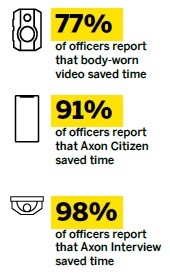 An obvious concern is the comprehensiveness of capture in body-worn video and other tools, creating a high volume of new data which needs storing and sifting. More footage means more to review and redact. The officers spoken to acknowledged this, although one noted, ‘a lot of the time, if you’ve been to an incident and you are redacting, you know where the information is that you need and what you’re going to have to redact’.
An obvious concern is the comprehensiveness of capture in body-worn video and other tools, creating a high volume of new data which needs storing and sifting. More footage means more to review and redact. The officers spoken to acknowledged this, although one noted, ‘a lot of the time, if you’ve been to an incident and you are redacting, you know where the information is that you need and what you’re going to have to redact’.
Despite these concerns, body-worn video realised time savings later in the process: ‘I don’t think that we are getting called to court as much as we used to, because the CPS can review the BWV footage and say to suspects – you haven’t got a leg to stand on here,’ said one study participant. If cases are more frequently resolved with a simple video review rather than lengthy court proceedings, backlog decreases rapidly. This allows not only the force, but also the courts, to be more productive.
The efficiency in reducing court visits more than made up for the increase in digital evidence to process.
With efficient evidence management workflows and connected technologies, the influx of digital evidence remains an asset rather than a drag on resources.
Axon Interview is a godsend compared to using a disc and everything else. If you’ve got an interview that you need sections of word for word, you can get that straight away because it’s instant. Even just the signing on process in interview rooms and being able to use Teams on the monitors is very helpful.
Study participant
Saving time on travel and administration
Further to saving on unnecessary court time, technology has cut down on the other administrative and travel time. The day-today tasks of policing can take up an inordinate amount of the day — time in the car, time burning evidence to discs or tapes, time sorting through hard formats to find the right evidence. When these processes are digitalised and immediate, it buys back the hours in the day.
Officers identified where time saving efficiencies were realised by using current cloud and interview technology:
- When an incident is reported, the caller can share evidence live to better inform the call handler
- At the incident, evidence is gathered immediately. Later, links can be sent to additional witnesses to collect further evidence
- No need for copies of tapes or evidence to be made or stored, because evidence can be reviewed, replayed and interrogated anywhere in the cloud
- No possibility of physically damaged tapes
Members of the public don’t have to wait for an officer’s visit, because they are using cloud technology.
“In my previous role I was gathering evidence from Barrow which is an hour and a half drive away. But now with Citizen, instead of a three hour round trip, I can just phone somebody and send them the link.”
 Given that efficiency is proving value for money and increasing return on investment, Cumbria is able to make an easy case that it is an efficient force with these savings.
Given that efficiency is proving value for money and increasing return on investment, Cumbria is able to make an easy case that it is an efficient force with these savings.
A legitimate force
We can define legitimacy as the force operating fairly, ethically, and within the law and building positive, trusted relationships with the community. During the study, we sought to discover how far:
- Body-worn video, cloud, and interview technology supports positive relationships between the police and the public
- Body-worn video, cloud, and interview technology supports public perceptions of police legitimacy
The impact of body-worn video on perceptions: Transparency, accountability, and complaints
98% of officers and staff responding to our survey thought that body-worn video had a positive impact on police interactions with the public, but noted that engagement on an individual level sometimes varied. An officer reported, “Some people will refuse to speak to police all together if they know that BWV is being used”.
With BWV, the number of complaints against officers probably haven’t decreased, but the complaints are probably resolved quicker and the number of times that an officer has been exonerated has probably increased.
Previous research shows that the public generally supports the use of body-worn video[7]. This extends to the district of Cumbria: body-worn video is ‘reassuring the (Cumbrian) public that stop and search powers are being used properly’ (HMICFRS, 2018/19 reporting). A member of the public and part of Cumbria’s Independent Advisory Group member told Crest, “When you’ve experienced a trauma your brain is in a fuzzy mess – it’s good that the police can capture your thoughts straight away in a timely way.”
Officers saw a connection between use of the available tools and accountability. ‘Using BWV to record statements from significant witnesses can be really useful for transparency reasons,’ we were told, ‘we’re not putting words into the victim’s mouth.’ Whether body-worn video actually improves police-public relations has proved more difficult to discern based on prior research. What is measurable is the number of police complaints, and 2015 reporting in Hampshire demonstrates a reduction after the introduction of body-worn video[8].
In Crest’s study, the officers didn’t necessarily see a reduction in police complaints, but they expressed satisfaction with the speed of their resolution.
“With BWV, the number of complaints against officers probably haven’t decreased, but the complaints are probably resolved quicker and the number of times that an officer has been exonerated has probably increased.”
Every complaint resolved in a positive manner contributes to the strengthening of police and community relationships over time.
How police technology affects victim and witness satisfaction levels
When people have fallen victim to or witnessed a crime, it is important that they are supported and their voices are head. Technology can help them engage in investigations with a level of distance that makes them feel more comfortable. Securely uploading footage gives officers a starting point to meet the victims and witnesses where they are.
Cumbrian officers felt that the cloud technology in particular had driven up victim and witness satisfaction, and the tool had a net positive impact on public engagement. 91% of officers perceived a positive impact, in line with focus group expectations.
“Victims feel satisfied as they can upload the evidence conveniently, and officers can call them back and talk through the evidence.”
Legitimacy and its connection to psychological safety
In a time of austerity and scrutiny, psychological safety is critical to officers’ performance and feelings of success in their roles.
The reporting both in this study and elsewhere generally points to body-worn video generally improving legitimacy, and in terms of the impact of the tools on psychological safety, it was body-worn technology that had the biggest impact – 93% of those surveyed reported a positive impact on their feelings.

Conclusion
Throughout this study, Crest Advisory assessed the roles that Axon technologies played in effectiveness, efficiency, and legitimacy at Cumbria Constabulary. Through objective surveys and verbatims collected from officers on the ground, the study found that body-worn video; cloud evidence management and sharing, including remote evidence collection; and interview room software successfully supported the frontline in a number of areas.
The frontline experience with these technologies has helped officers and the force more effectively support victims and witnesses, boost efficiency, demonstrate return on investment for public spending, heighten a sense of psychological impact in the day-to-day, and most importantly, develop greater community relationships. Cumbria Constabulary’s technology investments have had a large impact on the force and will continue to do so in the years to come.
To read this whitepaper in its original PDF format, please click here
About Axon
At Axon, our mission is to protect life, capture truth, and accelerate justice with the leading technology for public safety.
You may be familiar with our TASER devices protecting life or our body-worn video cameras capturing truth. But we are also revolutionising police workflows through robust digital evidence management, harnessing the power of the digital transformation to solve cases faster. This means less time on administrative tasks and more time on the work that matters most.
We’re bringing all your digital evidence from body-worn devices, in-car cameras, and even from the public together in one secure DEMS platform. Our hardware and software all work as one Axon network, seamlessly, from capture to the court.
Learn more and reach out at uk.axon.com.
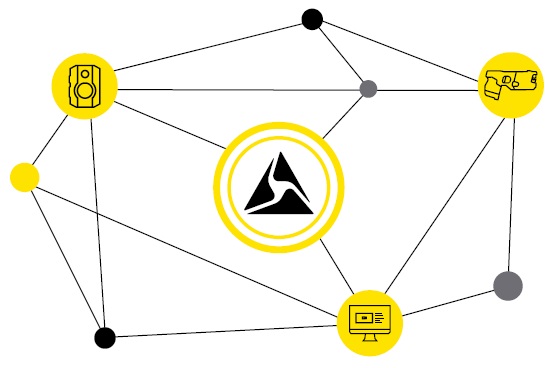
Sources
[1] https://www.justiceinspectorates.gov.uk/hmicfrs/police-forces/cumbria/
[2] Owens, Mann, McKenna (2014) The Essex Body Worn Video Trial: The Impact of Body Worn Video on Criminal Justice Outcomes of Domestic Abuse Incidents
[3] Adams & Mastracci (2018) Police body-worn cameras: effects on officers’ burnout and perceived organisational support
[4] Victims Commissioner (2021) Next steps for special measures A review of the provision of Special measures to vulnerable and intimidated witnesses
[5] Koper et al (2014) Of technology in policing: results and implications from a multi-site study of the social, organisational and behavioural aspects of implementing police technologies
[6] Based on the assumption that the average distance to collect evidence is the same as the average distance to travel to an incident”
[7] Lum et al (2019) Research on body-worn cameras: what we know, what we need to know
[8] Ellis, Jenkins and Smith (2015) Evaluation of the introduction of personal issue body worn video cameras (operation hyperion) on the isle of wight: final report to Hampshire constabulary

